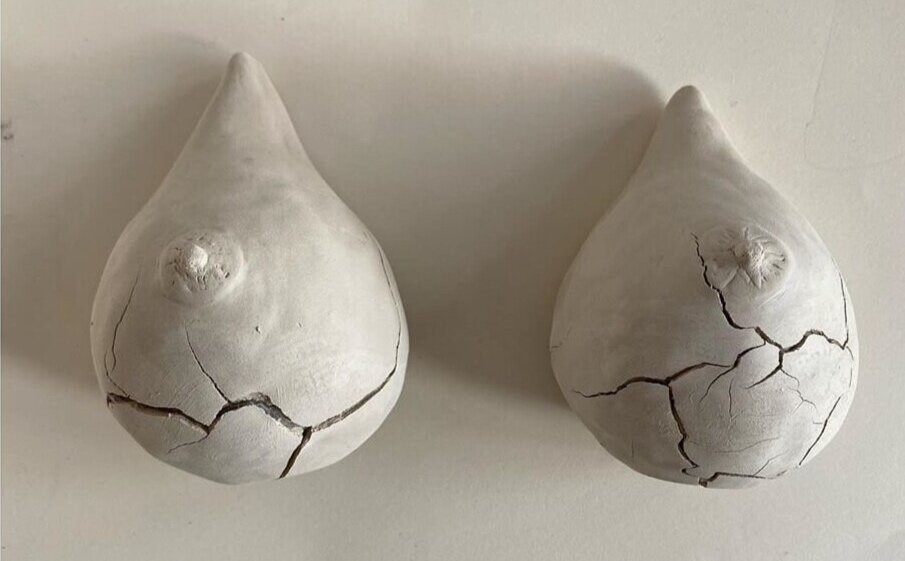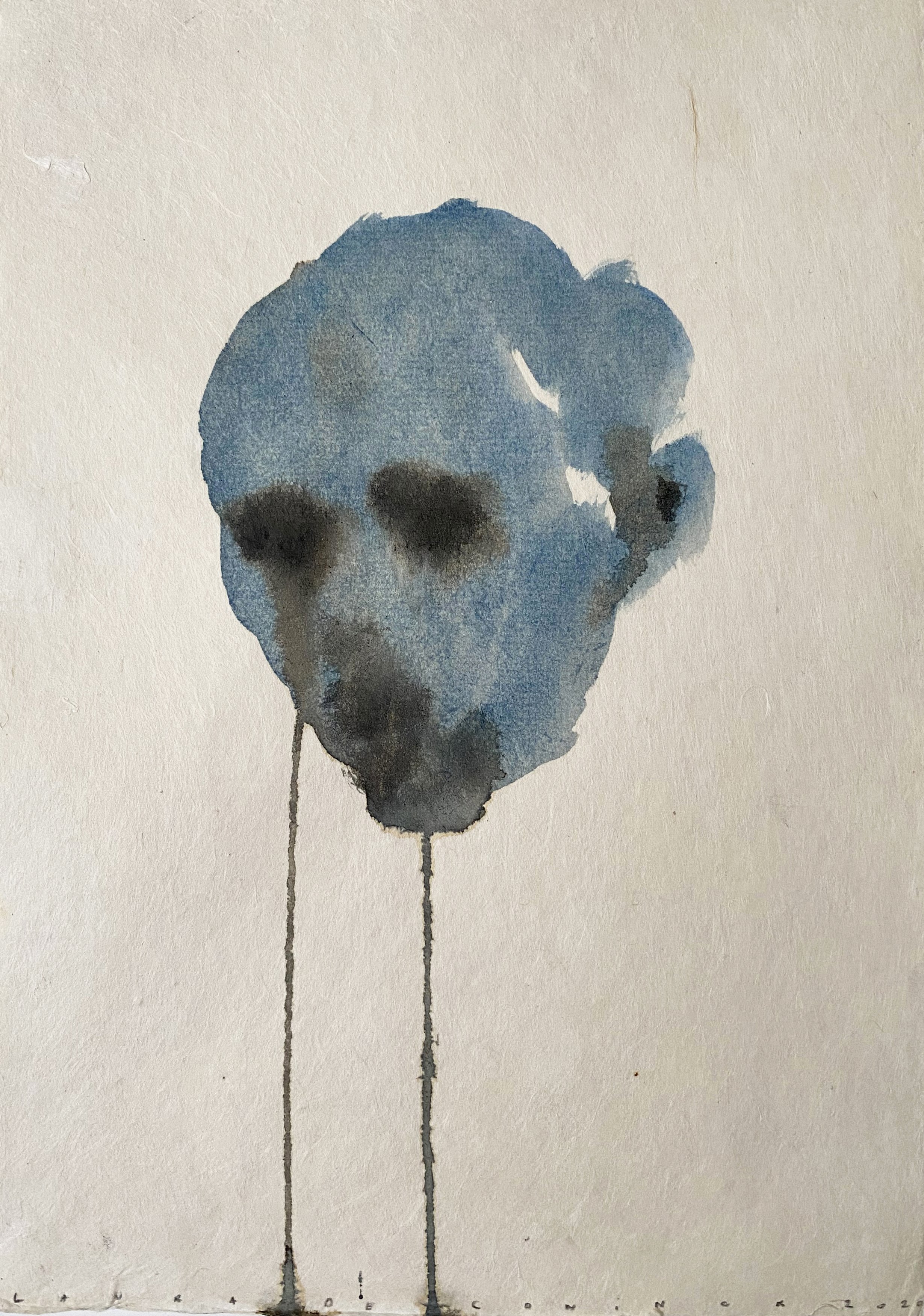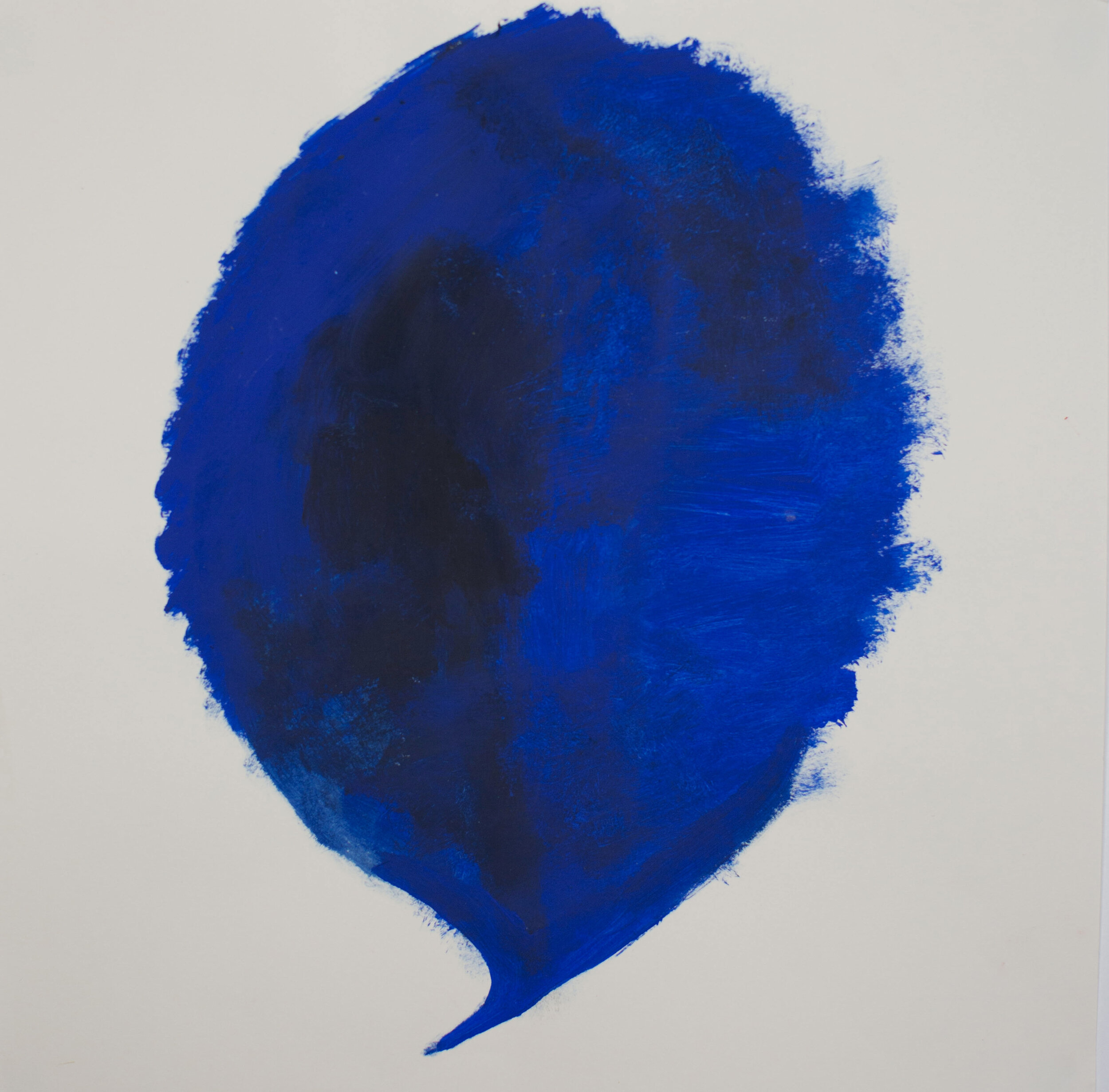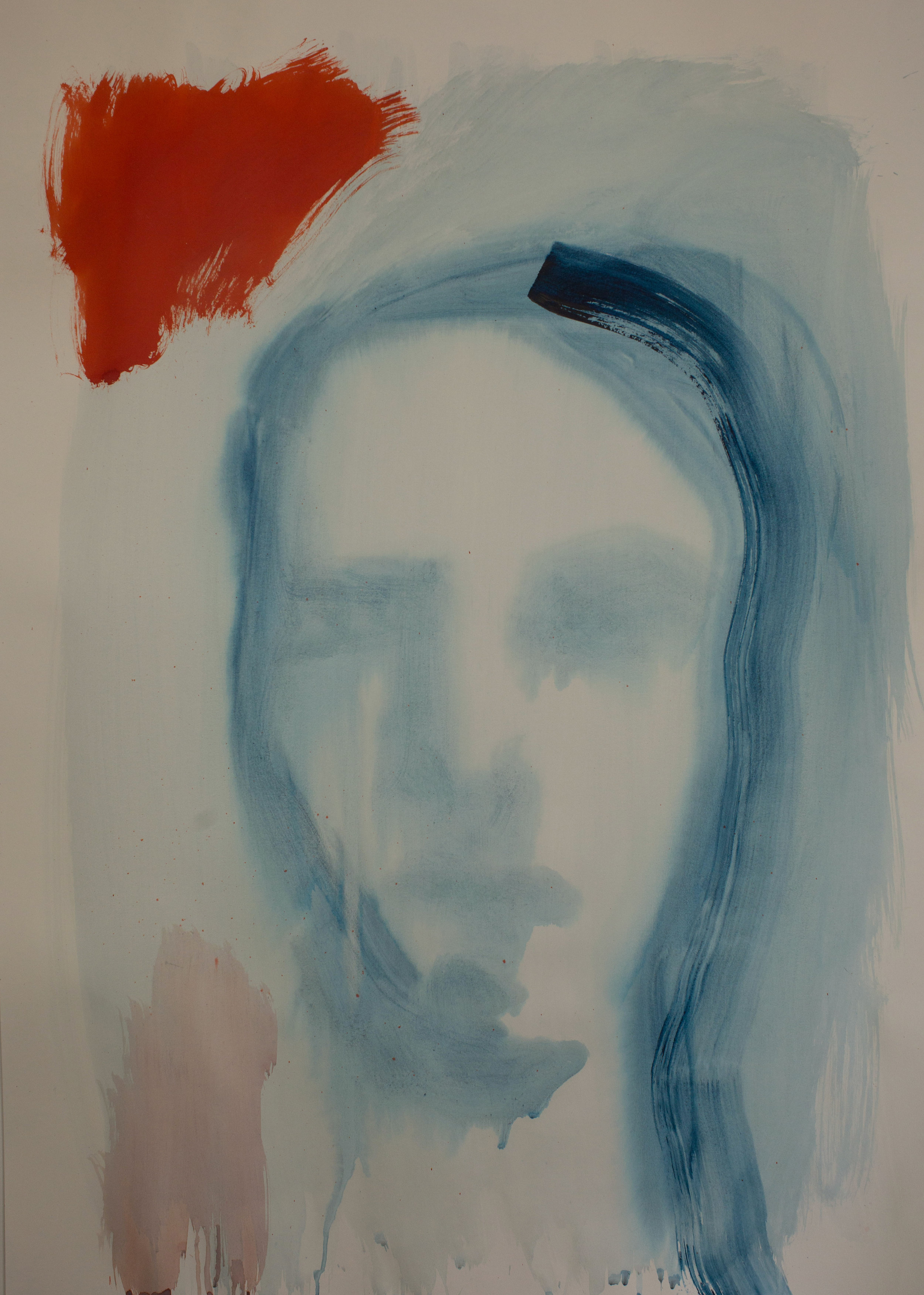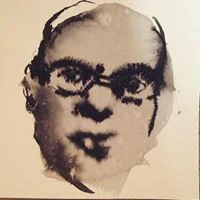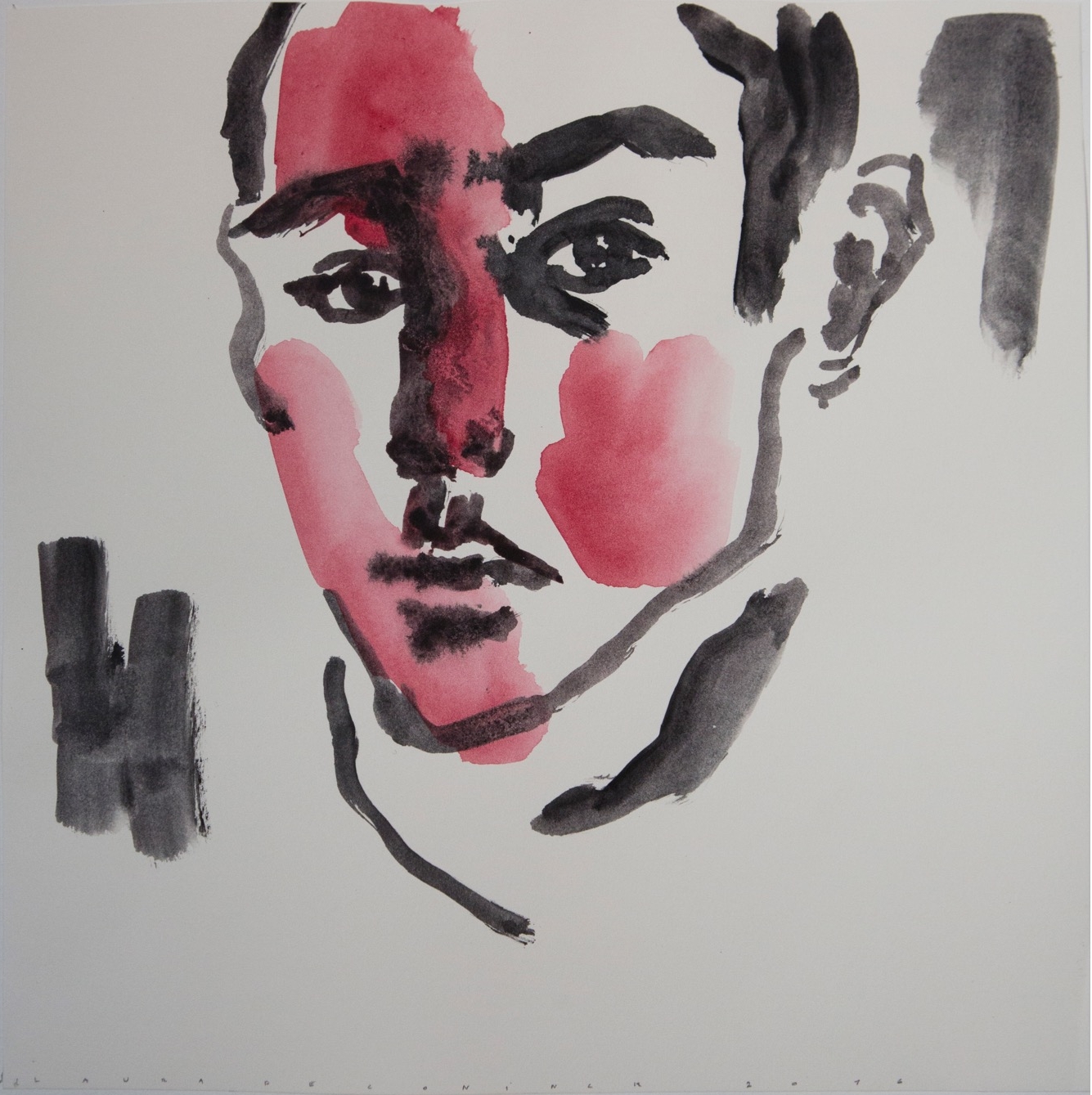Olfactory art
The KMSKA perfume
for the Royal Museum of Fine Arts Antwerp
The KMSKA delights the senses even more with its own tabl’eau de parfum
Laura de Coninck: “The new KMSKA perfume olfactorily maps various themes from the museum and its collection through scent accords. Each accord consists of a balance of ingredients that evoke a different theme. The pleasure gardens often depicted in classical paintings are evoked with spicy, earthy, and fruity notes like carnation, apple, and rose. Smoky and sacred rituals are called to mind with hints of incense and fragrant myrrh, and the ingredients from the ‘holy oil’ recipe used for sacraments. The Rubens Skin accord uses a cloud of white musk with a touch of ambergris and cumin to bring the naked bodies of Ensor and Rubens to life, while modern molecules, musk, and sandalwood give it a transparent, contemporary touch that evokes the color white and also refers to the modern museum section.”
“Cedar and oak wood represent the parquet and paneling of the giant classic rooms. Gum resin– found in old varnish types – and natural turpentine from Cedarwood wood and pine bring the active painters’ studio to life.
Clair-Obscur
“The central theme is Clair Obscur: the interplay between light and dark that is often seen in artworks, but also in this building. There are the historic halls that everyone knows, to which a bright white section has been added during the renovation. There is the classical collection, but also modern art. This duality—between old and new, dark and light, past and future—is something I aim to reconcile in the fragrance. At its base, you'll detect deep, intense notes like incense and wood, but these are elevated by modern, transparent, fresh accords. One cannot exist without the other; heaviness and light need each other.”
The pleasure garden of KMSKA
With these clay sculptures on pedestals, depicting imagined petals and scented with the @kmska_museum perfume, the public is welcomed into ‘the pleasure garden of this Royal Museum of Fine Arts Antwerp.’ The pleasure garden is one of the accords incorporated into the perfume, often seen in the paintings of the Flemish masters. This perfume was approached as an olfactory artwork, which distinguishes it.This perfume was conceived as an olfactory artwork, setting it apart. In this process, the museum was first transformed into a perfume, and then the perfume became an artwork once again, completing the circle.
I got help to make the piëdestals of Gerard Leysen @uitslag_punt_net and @sintlucasantwerpen
And thank you @givaudanperfume for the cooperation and @theperfumechronicles@sofiealbrecht
l’Oeil et l’Esprit
2024
Crops
Deconstruction:
Derrida’s ‘deconstruction’ idea is about what is both implicitly and explicitly present (in a text). The white space at the page edges and between lines of words create a paradox: what remains unsaid gains meaning through what is expressed. The unspoken, unthought, and forgotten elements shape a text into its essence. These Silences and blind spots contribute constructively to the text.
Quintessence
French filosopher Merleau-Ponty discusses ‘quintessence’ in painting. A painting distills a new visibility and world from reality. They say the painter grants visual existence to what eludes ordinary sight, offering a glimpse into a personal world—a second visualization—where the visual gains additional power. In ‘L’Oeuil et l’Esprit,’ it is suggested that a painting seeks to represent the invisible, capturing the spirit of things and their elusiveness. Their absolute presence (simultaneously absent) is revealed through the magic of seeing, inviting us to view the world differently, exploring various perspectives.
The unspeakable
Also Bell & Fry assert that art expresses the unspeakable, connecting us with a higher reality—a mystical experience. The artist possesses the ability to grasp a higher truth. Through art, we become aware of the true reality, the divine inherent in everything. The universal rhythm permeates all, bringing us in touch with the metaphysical (supernatural) reality. In this context, formalism grants the artist the power of interpreting the divine.
My approach is much more modest than that of Bell & Fry. I depict nature as it presents itself to me—I am merely the observer capturing it. Sometimes quite literally, by tracing a shadow as it falls on my canvas: the light between the leaves. But also the absent plays a role—the white spaces between the lines, here the gaps between the branches, just like Derrida gives the white space a meaning. By looking at things differently, structures emerge, abstractions take form, and figures come to the fore. They offer themselves as a kind of ‘codes.’ Decoding the blind spots, what isn’t explicitly stated… I capture what I ‘see.’ The visible is equal to the invisible. A sort of distillation of the absolute from my point of view… my unique perception of the world. A tribute to the metaphysical reality, as I perceive it—the divine and mystical presence of nature that permeates everything. And how eventually inner thoughts also coincide with outer perception.
The Blue Hour
2024 at Shame Gallery Brussels, Pop Up in Artchurch Rochus, Courtrai
The Blue Hour was a group exhibition of House of SHAME (formerly known as SHAME Gallery) curated by Nathan French, in collaboration with Art Church Rochus, renowned for its cutting-edge approach to art, it now showcases the forefront of Belgian art within the sacred confines of the desecrated gothic Flemish church, St. Rochus.
Through paintings, installations, sculptures, and performances, they invite viewers to explore the profound connection between the Blue Hour and human experience. In an era of technological advancements and societal change, artists play a vital role as interpreters and catalysts. Through their diverse mediums and perspectives, they provide insight into understanding the intricacies of their worlds. Artists: Nina van Denbempt - Laura de Coninck - Ellen Vrijsen - Shirin Nekou, Nathan french - Yann Laissy - Aron Mathe.
Pierrot in Turquoise
January 2021
“When curator Joanna de Vos asked me about a self-portrait of me as a clown, I immediately thought of this portrait in which I always recognized a Pierrot: in crying paint. Among clowns, I would indeed rather be the Pierrot. Not the screamer, "but with a heart with lots to say” (David Bowie): the declarer, thoughtful, deeply emotional, naive, sweet and loyal, ...
Olfactory art: below the painting is a little bottle, with the inscription 'Eau de larmes', in which I caught real tears. When we cry, it relieves, partly due to the fact that we also chemically excrete that energy in that secretion. Research has shown that the 'pheromones' in tears lower testosterone, making us more sensitive and compassionate. I like the idea of people looking at my work with that chemical compound that softens them, with my pheromones and underlying emotion captured in those few drops in that little bottle.
In the end, what we do as artists is an attempt to 'sublimate' emotions, and to make our 'clown moves' (joy, desires,…) and also grief into something that people can come and watch.
The tittle ‘Pierrot in blue’ refers to David Bowies 'Pierrot in Turquoise’. “.
This painting in acryl and Indian ink is part of part of the ‘The Clown Spirit’ exhibition, curated by Joanna de Vos, exhibited in Rome in Mucciaccia Gallery in June 2023, next to Marina Abramovich, Jan Fabre, Sofie Muller, Jan Fabre, Guillaume Bijl, Tom Liekens, and so many more.
It is a traveling exposition that will be shown in different cities for 3 years.
The Clown Spirit
Galleria Mucciaccia is glad to host the curator Joanna De Vos with the show
‘The Clown Spirit – The Traveling Exhibition’, from May 24 until June 24, 2023.
Inspired by family history related to the circus, Joanna De Vos embraced this world of wonder as a theme. The artist, like the jester and the clown, keeps a finger on the pulse of humanity and society. Someone who can be permitted to play with truths and fictions and manages to expose the mechanisms of life - the circus of life. The artist positions himself as acatalyst of wonder and freedom, a symbol that invites us to reflect on the circus around us, and to get moving, as a wandering mind grasping at wonders and worlds.
Galleria Mucciaccia
Largo della fontanella di Borghese 89 – 00186, Roma
From Monday to saturday 10.00 am - 7.30 pm
Sunday closed | free entry
Tel. 06.69923801
www.mucciaccia.com | roma@galleriamucciaccia.it
Roma | Londra | New York | Singapore | Cortina d’Ampezzo
Saudade for Herman
Juni 2021, in memoriam for my father Herman de Coninck
HORTUS CONCLUSUS TULIPA
Garden and landscape architect Ronald van der Hilst had his garden bottled as perfume 'Hortus Conclusus Tulipa' by olfactory artist Laura De Coninck, with the cooperation of Sonia Constant and Givaudan Perfume.
The fragrance pays tribute to Ronalds Hortus Conclusus garden in the city centre of Antwerp, but especially to its tulips, as you can find 350 varieties of the tulip here. The garden was also part of the Finnis Terrae exhibition trail last winter, so they decided to make a tulip fragrance that captures the scent of the spring garden. People were sprayed with the scent before entering the garden to evoke the scent of the spring garden during winter.
To create this perfume, Laura went on a fragrance journey along the flowering tulips and plants of Ronald's Hortus Conclusus and was surprised by the aromas of honey, floral nectar and elderflower emanating from the many tulips. She frequently boarded the Thalys up to Paris with a bunch of freshly picked
tulips of Ronald, to go to renowned perfume house Givaudan where she worked in cooperation with her mentor and master perfumer Sonia Constant. Together, they delved into the incredible fragrance archives, where they discovered the Tulipa Sylvestris formula. Coincidentally or not, Ronald's favourite scented tulip.
The result is a particularly layered perfume with the tulips as the base, complemented by notes of of elderflower (also a headspace), fig, orange blossom concrete, sandalwood of Australia with amber for a creamy undertone. Enveloped by the green aromas of vetiver and enhanced by patchouli for deep earthy scents. And a pronounced saffron note, a translation of the sensual fragrance that characterises the flower in the final stages of its bloom.
This perfume (edition 500 bottles) has some characteristics of natural wine: Ronald and Laura have chosen not to fix the perfume, made with very high-quality ingredients, as is usually done. This allows the perfume to mature and develop further in the bottle, by analogy with the life cycle of a garden, which becomes more and more beautiful as it matures.
Visual artist Marcel Lennartz took on the design, in which he strives for purity and simplicity because it should be all about what is in the bottle. (The natural ingredients may also cause sedimentation over time, or a change in colour, but this has no effect on the fragrance itself). You can buy it at Necessities Antwerp.
Hedgren Perfume
After an internship in the Fine Fragrances department of Parisian perfume house Givaudan – one of the most renowned perfume houses in the world – Laura learned to create perfumes. She was guided in this by mentor and master perfumer Sonia Constant (whose creations include Narciso Rodriguez, Tom Ford, Gaultier, Guerlain and her own brand Ella K). A real honour. Since then – working as artist in residence at Givaudan and under Sonia's supervision – Laura has developed her own fragrance projects. Her debut is Hedgren’s very first perfume.
Laura approaches scents in a different way to the perfumer. She works with them in the same way she paints. She identifies a raw material she likes, adds to it, looks at it – in this case, sniffs it – adds something else and so on, until she arrives at the desired composition. She adds elderflower to cedar wood just as she would add yellow to blue.
Hedgren's new perfume evokes the joy of the first bike ride that heralds the summer: fresh green scents of sun-awakened grass, wild herbs, elder and linden blossom, with hints of green fig, bergamot and invigorating yuzu, rising up from an earthy, woody base of vetiver and cedar. The perfume also has a hint of sun cream, the crisp green aroma of petitgrain and the spicy tang of pink pepper. The metallic accent of roses evokes metal details on the bags – a suggestion from master perfumer Sonia Constant. A dash of leather brings extra depth, softened by musk and ambroxan.
The simple, classic bottle has been fully customised with paintings by Laura, working in collaboration with graphic designer An Eisendrath. The duo opted for a complex printing process in which every side of the bottle is used. With a view to sustainability, they replaced the usual packaging with a tote bag.
For the visuals Laura translated the perfume into paintings.
Nasi Per l’Arte
(Juni 2023)
Recovery of the good breast lost
‘Recovery of the good breast lost’ was part of the Nasi Per l’Arte exhibition in @palazzomerulana in Rome, curated by @joannadevos and @melaniar , and was a great succes!
together with CONTEMPORARY ARTISTS Michaël Borremans, Jan Fabre, Sofie Muller, Peter de Cupere, Daniele Puppi, Yves Velter,… And loaned works of Jos Albert, Pierre-Louis Flouquet, Robert Giron, Oscar Jespers, Paul Joostens, Rene Magritte, George Minne, Constant Permeke, Leon Spilliaert, Marcel Stobbaerts, Henri Van Straten, Fernand Wery. IN DIALOGUE WITH ARTISTS OF THE PERMANENT COLLECTION AT PALAZZO MERULANA
Giacomo Balla, Duilio Cambellotti, Felice Casorati, Giorgio de Chirico, Antonio Donghi, Ercole Drei, Riccardo Francalancia, Guglielmo Janni, Leoncillo Leonardi, Arturo Martini, Fausto Pirandello, Antonietta Raphael, Francesco Trombadori, Alberto Ziveri.
RECOVERY OF THE GOOD OBJECT LOST
(April 2020)
In psychoanalysis, the term ‘the good object’ refers back to the blissful experience of our suckling at our mother's breast. When we realise that we do not coincide with the breast, we experience a traumatic loss. From then on we are ‘condemned to desire’. Life becomes a longing, a quest for ‘objects’ that can match that original symbiosis. Lacan calls that first object of desire: 'Objet Petit a’.
By evoking a positive experience about what we have lost, psychoanalysts believe we are partly able to heal this grief. And so I returned – with a wink – to this universal loss. You can see it as an answer to the ‘Saudade theme’: these are consolation installations to give comfort to a primal, universal loss at our basis.
Objet Petit a
OBJET PETIT a
(May 2020)
The giant fake-fur breast invites you to touch, but it is mainly its scent that takes you back to that primary source of happiness. The fur is infused with the smell of breast milk. The scent was created by the Laura in cooperation with master perfumer Sonia Constant and Givaudan Perfumes Paris.
Research has revealed that scents not only affect our mood, but can also have a healing effect. The injury to the breast is a play on significance: Is it the injury that life inevitably entails? Or is it a mutilation that reflects disaster and disease, a reference to the breast as a source of lust and life and thus also to destruction and death?
The title refers to a term of Lacan. He uses ‘Objet Petit a’ to designate both the object and the cause of desire. A baby literally internalizes the first love object by swallowing the mother's nourishing milk. Melanie Klein speaks of "the good breast. It symbolizes the satisfaction of a child's desires and primary needs. In a later stage of development, the breast can also literally become an object of sexual desire.
Mobile of desire
June 2020
Safe kissing tool
May 2020
The visual work I made during the lockdown questions that physical distance and its mental consequences. With comfort installations I played on the need for connection and touch. I made use of scents that have their origin in our collective subconscious and our memory. After all, smells are capable of arousing an extra dimension. They evoke memories and emotions and can even provoke physical reactions. This synesthesia allowed me to play multiple registers.
I’m very grateful my mentor, master perfumer Sonia Constant and Givaudan Perfumes, helped me in creating the mother milk fragrance with the most advanced Headspace technology and their expertise, so we had a pallet of mother milk molecules to start from, to then creatively complement.
The other works in this series also hark back to the oral phase, in which, as a result of separation from the mother's breast, we develop a libido, a thirst for satisfaction, love and desire.
'Social distancing' deprives humans of something fundamental and basic. This mouth with plastic cap forms a machine mouth for safe kissing. This immediately destroys all the magic of a kiss.
Olfactory paintings
These works are part of the 'Oral Phase' serie. They refer to the consequences of the separation from the mother's breast, through which we develop a libido, a desire and a craving for love and satisfaction.
Condemned to desire
Condemned to desire
